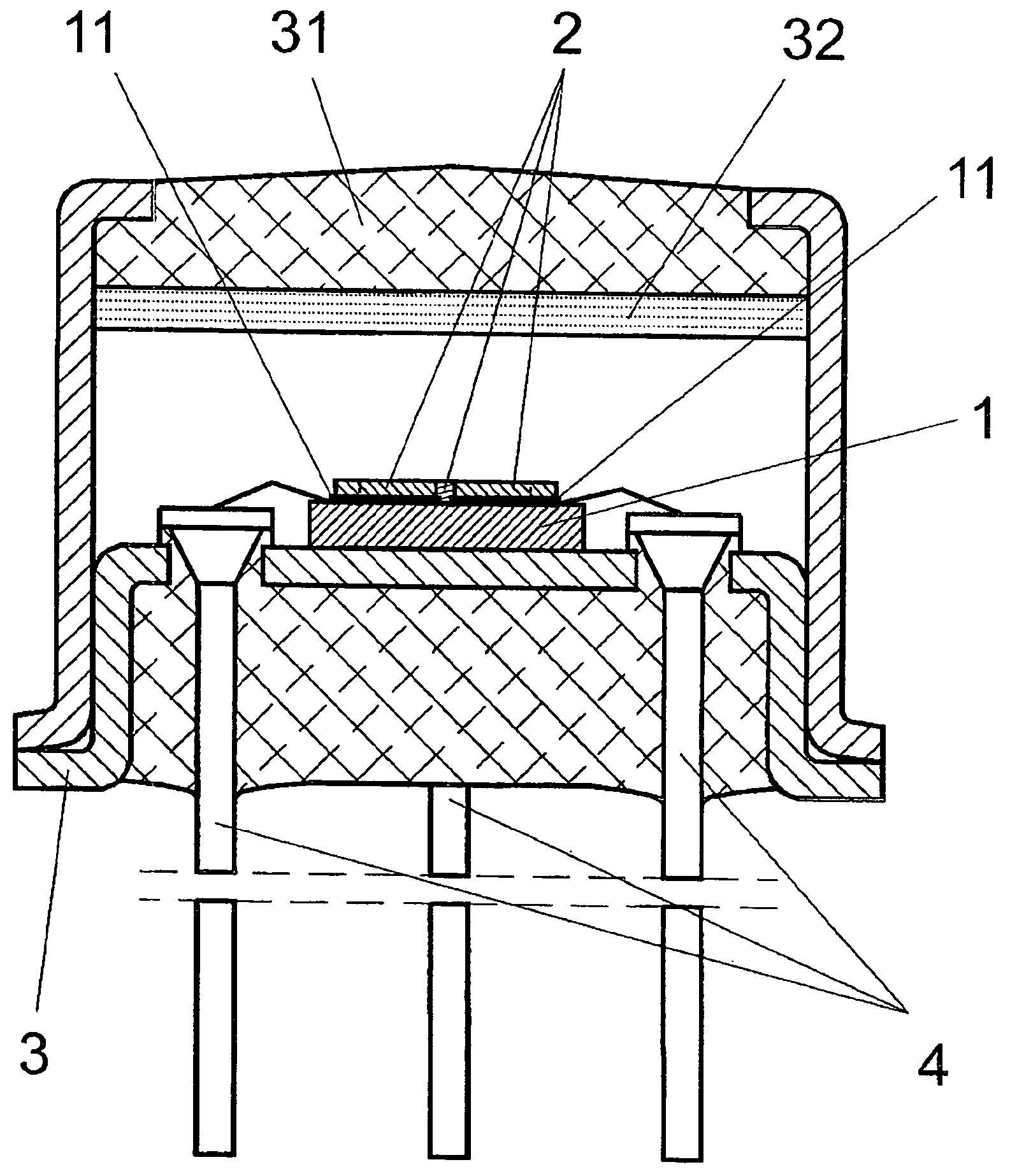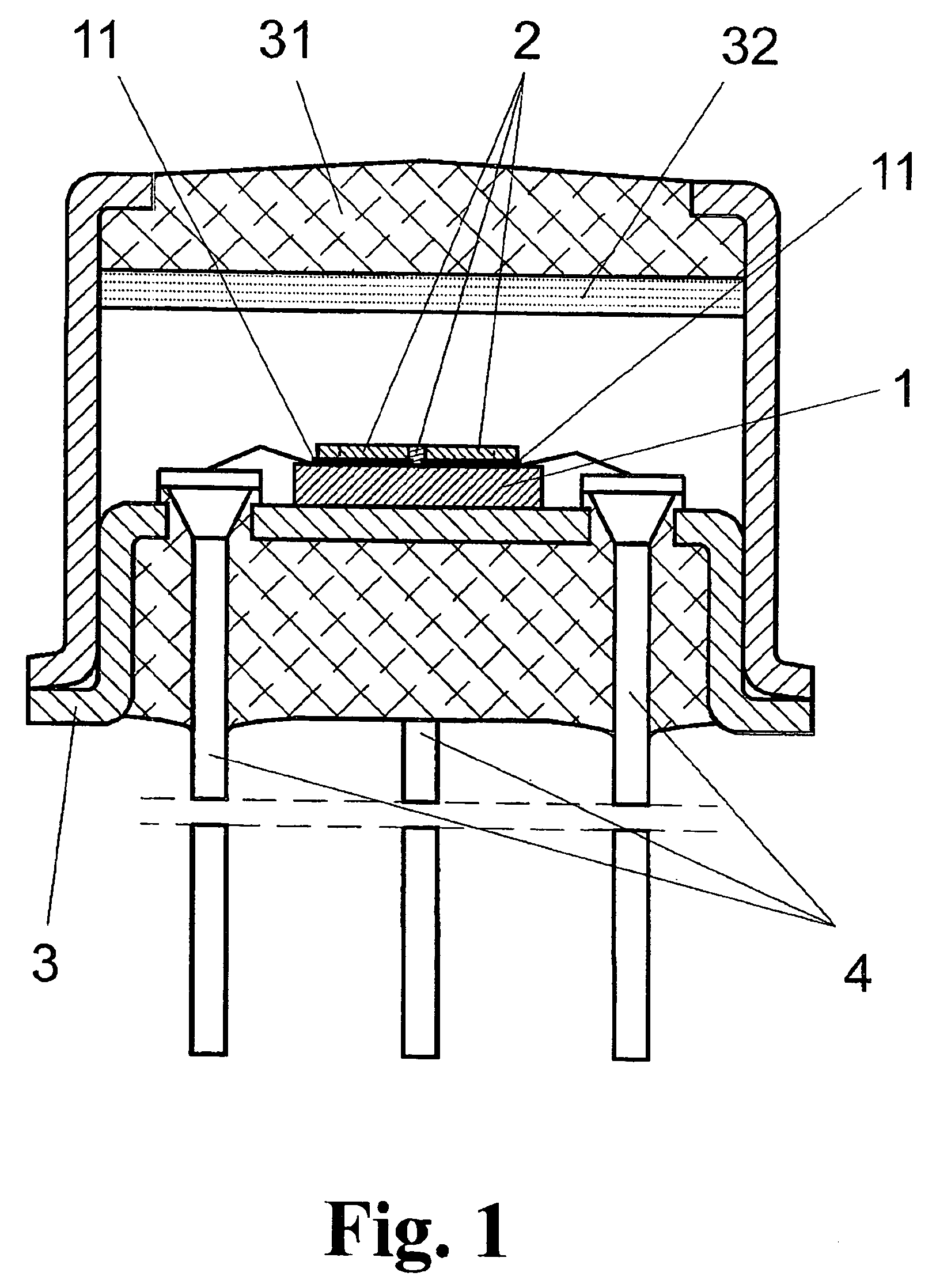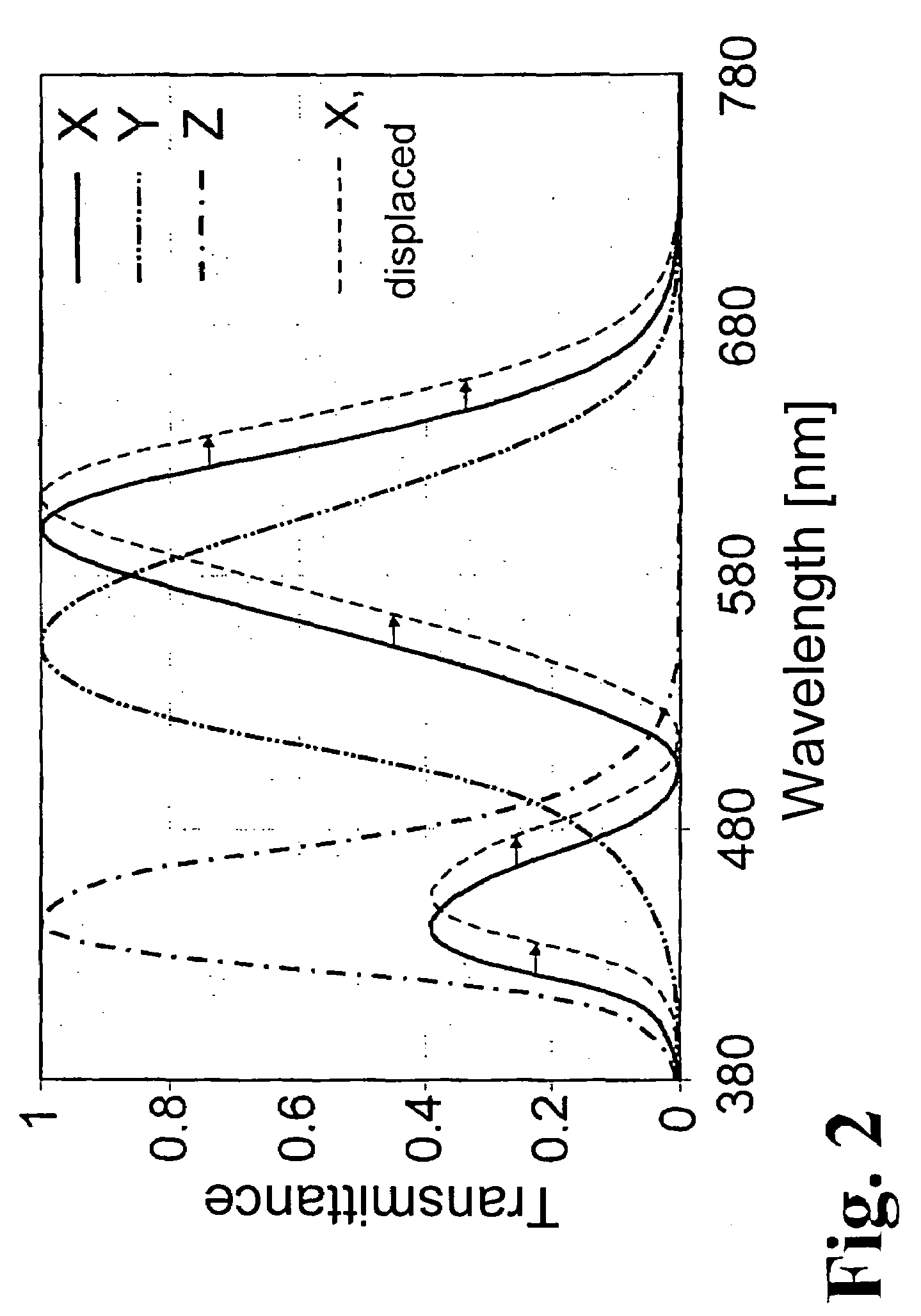Photo sensor for standardized color measurement
a color measurement and photosensor technology, applied in the direction of color/spectral property measurement, instruments, electric discharge lamps, etc., can solve the problems of measurement of falsified color values, special reference light calibration, and substantial limitations, and achieve the effect of simple manner without costly reference light calibration
- Summary
- Abstract
- Description
- Claims
- Application Information
AI Technical Summary
Benefits of technology
Problems solved by technology
Method used
Image
Examples
first example
[0067]A narrowband color stimulus can be simulated as a spectral bandpass interference filter, assuming a typical measure for the spectral bandwidth of a conventional interference filter of 15 nm.
[0068]FIG. 8a shows the spectral transmission (or reflectance) of an object of the kind mentioned above for a centroid wavelength of 555 nm. For a model target of this kind, the transmittance has a spectral width of 15 nm and a 1 / e fall-off and is examined with variable centroid wavelength. Compared to a reference position of 555 nm, the filter curve is shifted from −12 nm to +12 nm in steps of 0.5 nm for error estimation and, in so doing, is determined for every displacement ΔE of the emission spectrum of the reference color and measured color in the CIELAB space, specifically as a function of the centroid wavelength of the reference transmission. The maximum value of ΔE over all centroid wavelengths was plotted as a function of the filter curve displacement in FIG. 8b.
[0069]The overall r...
second example
[0071]LEDs can be simulated by providing a transmission filter with a filter width of 40 nm because the spectral behavior of typical LEDs can be closely approximated in this way. Accordingly, an object with corresponding transmission is taken as a starting point by way of substitution. The results for such a model target with a spectral width of 40 nm are very similar to those of the filter function with a bandwidth of 15 nm as can be seen from FIG. 9a. Thus it can be assumed that the color shift—at least in the spectral interval lying therebetween—is almost independent from the spectral width of the model target and is practically linear to the displacement of the X-, Y- or Z-filter curve with a given test object. Therefore, it is possible to calculate back from given color measurement errors to the secondary tolerances in a simple manner, since it is possible to work within the linear approximation.
[0072]With a thickness tolerance of ±2% per layer of the filter system, a maximum c...
third example
[0073]With standardized test colors, the spectral reflectance can often be approximated by a rising ramp function, this ramp function being characterized by an interval with constant minimal reflectance, a following interval with a positive rise, and a subsequent interval with constant maximum reflectance.
[0074]In this third example, it is assumed, using the standard illuminant D65, that there is no correction of measurement values aside from scaling. The transition area of the ramp function has a width of 50 nm and its center position (hereinafter: ramp position) which is shown as 555 nm in FIG. 10a varies over the entire visible spectrum.
[0075]Once again, there is a maximum color deviation ΔE in the CIELAB color space with a displacement of the X-, Y- and Z-filter curves. In contrast to the narrowband color stimuli, there is only a clear maximum of the color deviation at about 630 nm for every X-filter displacement as can be seen in FIG. 10b. With Y-filter displacement, the maximu...
PUM
 Login to View More
Login to View More Abstract
Description
Claims
Application Information
 Login to View More
Login to View More - R&D
- Intellectual Property
- Life Sciences
- Materials
- Tech Scout
- Unparalleled Data Quality
- Higher Quality Content
- 60% Fewer Hallucinations
Browse by: Latest US Patents, China's latest patents, Technical Efficacy Thesaurus, Application Domain, Technology Topic, Popular Technical Reports.
© 2025 PatSnap. All rights reserved.Legal|Privacy policy|Modern Slavery Act Transparency Statement|Sitemap|About US| Contact US: help@patsnap.com



